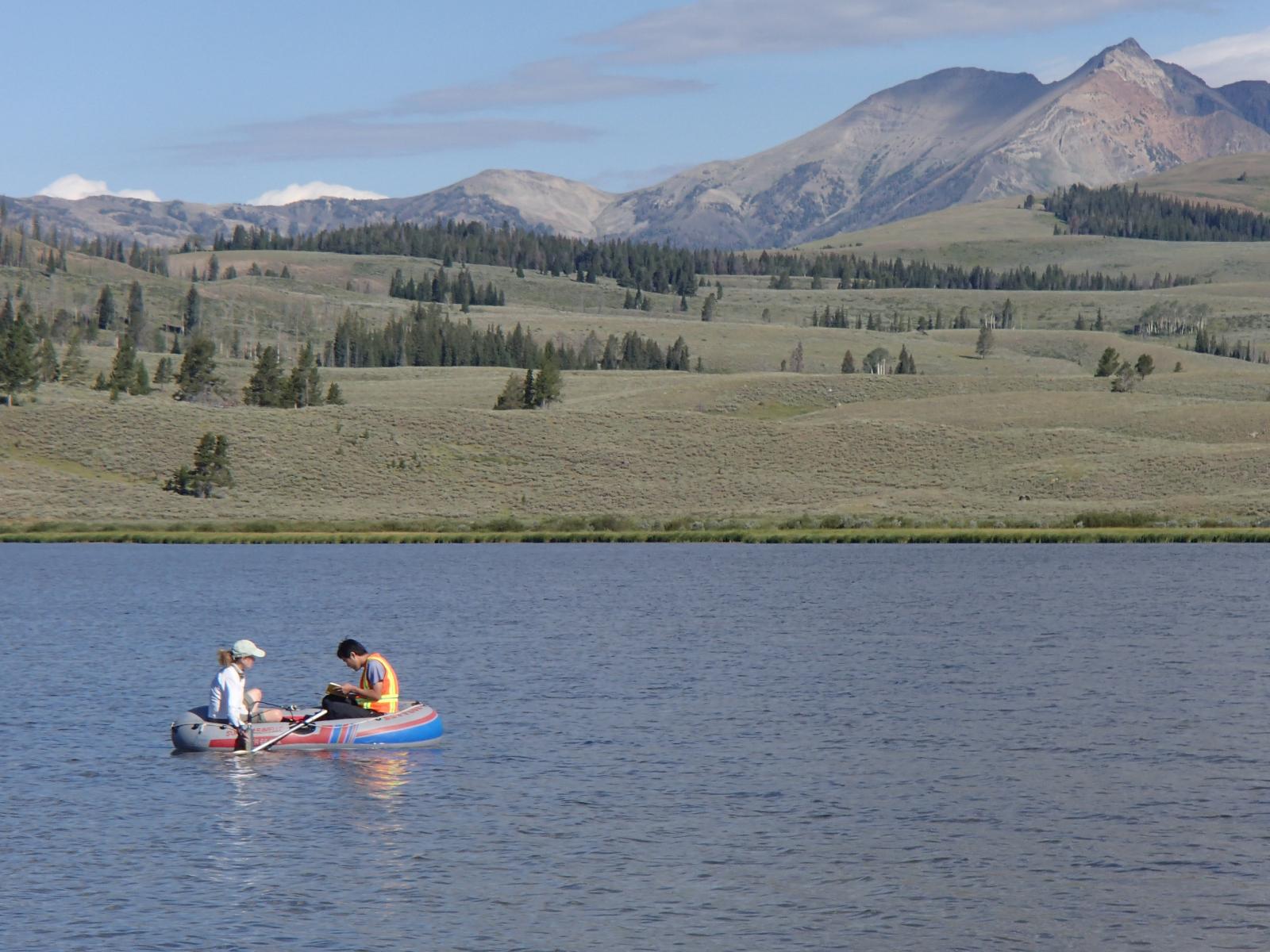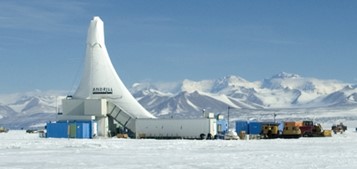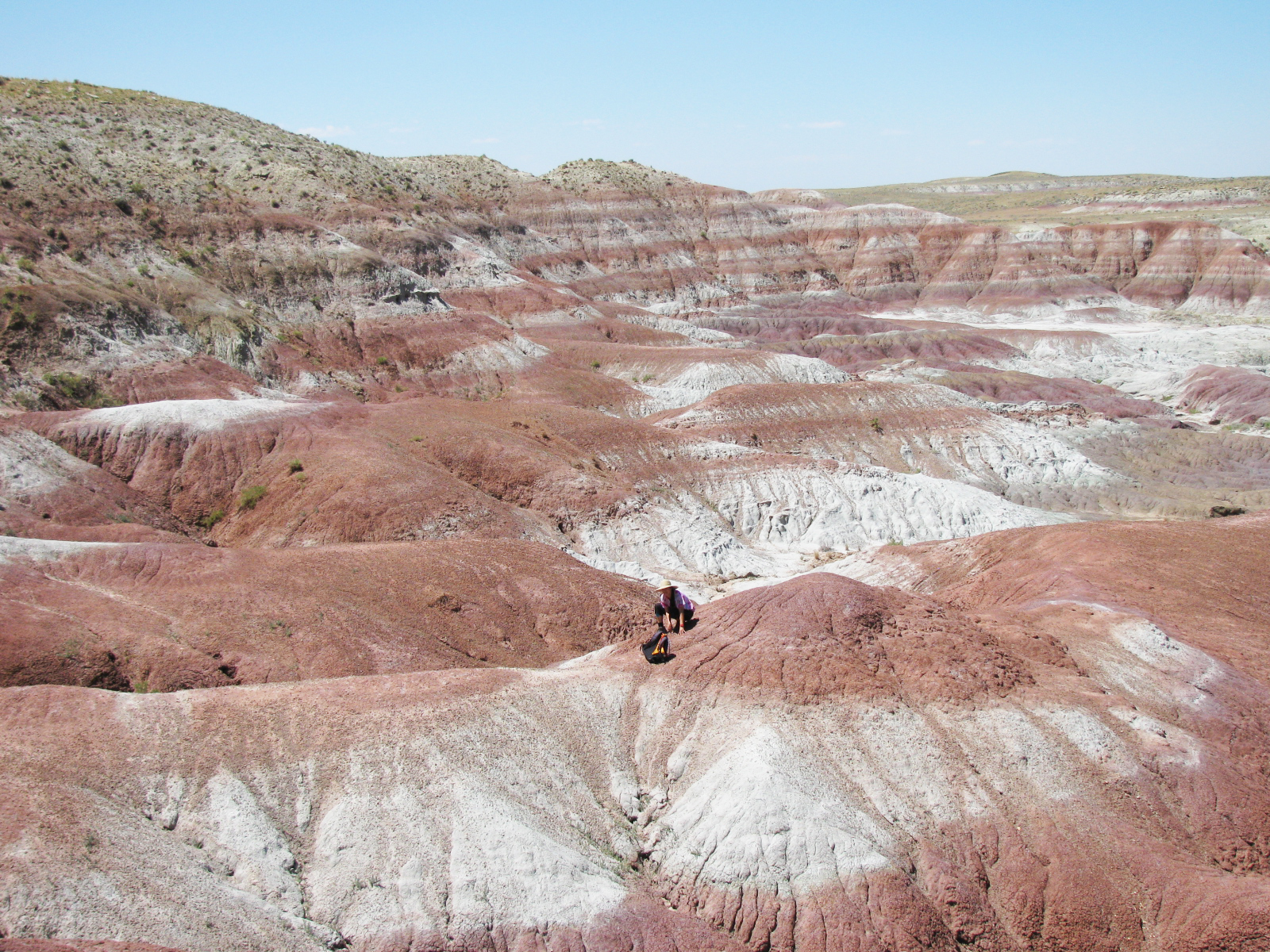
EAS students and faculty investigate climates and environments of the past in continental and marine systems - from the poles to the tropics; across diverse windows in Earth history from the Precambrian through the Cenozoic; and using a range of tools (sedimentology, geochemistry, paleontology). Ongoing research addresses major questions about Earth history, including the causes and impacts of mass extinction events; the Cenozoic evolution of tropical biodiversity; icehouse versus greenhouse worlds; evolutionary processes and trajectories in vertebrate, invertebrate, and protist lineages; and the chemistry and biology of ancient seas. Photo of an excavation spot of jaws and bones of early Eocene mammals provided by Ross Secord.
Ongoing Research

Sheri Fritz: Fritz and her students use diatoms preserved in lake and wetland sediments to investigate Quaternary and Neogene environments of tropical South America and western North America (Great Plains and Rocky Mountains). Fritz also co-directs the Trans-Amazon Drilling Project, an international project to reconstruct the history of the tropical forests and the associated climatic and geologic history.
Figure caption: Sampling lakes in the Northern Range of Yellowstone National Park
David Harwood: Harwood and his students apply the record of siliceous microfossils (diatoms, silicoflagellates, ebridians) to geological problems in interpreting paleoenvironmental change and dating sedimentary sequences. Main areas of recent research emphases include (1) glacial and climate history of Antarctica and the Southern Ocean via field outcrop and drillcore studies (ANDRILL, IODP, SALSA); (2) advancing the diatom biostratigraphic record for the southern high latitudes; and (3) exploring the origin and early evolutionary history of Cretaceous diatoms and silicoflagellates.


Ross Secord: Secord and his students study Cenozoic fossil mammals to address questions in paleoecology and paleoclimatology. Much of this research involves the use of stable isotopes in mammal teeth, soil carbonates, and bulk organic carbon from the Great Plains and the Rocky Mountain Region. Current projects include the study of early Cenozoic short-term warming events called “hyperthermals,” and how these events affected mammalian communities, as well as reconstructions of Cenozoic terrestrial habitats using stable carbon isotopes.
Figure caption: Badlands in the Wind River Basin, Wyoming, preserving mammal fossils from the Early Eocene Climatic Optimum.
Peter Wagner: Wagner and his students examine the relationships among rates of speciation, extinction, and anatomical change in relation to physical factors, such as shifts in local and global climate and biological factors, such as key innovations and predator-prey arms races. Ongoing research has a heavy emphasis on birth-death-sampling models and phylogeny-based tests of macroevolutionary and macroecological hypotheses. Wagner also has been involved with the Paleobiology Database since its inception.
Graduate Courses (GEOL)
823. Quaternary Ecology and Climate (3 cr) Fritz
824. Biogeochemical Cycles (3 cr) Fritz
830. Quantitative Methods in Paleontology (3 cr)
831. Micropaleontology (3 cr) Harwood
836. Evolution of Cenozoic Mammals (2 cr) Secord
850. Surficial Processes and Landscape Evolution (3 cr) Joeckel
851. Invertebrate Paleobiology (3 cr) Wagner
897. Quantitative Phylogenetics (3 cr) Wagner
898. Stable Isotopes in the Continental Record Seminar (3 cr) Secord
898. Paleoecology Seminar (3 cr) Secord
936. Siliceous Phytoplankton Paleontology (4 cr) Harwood